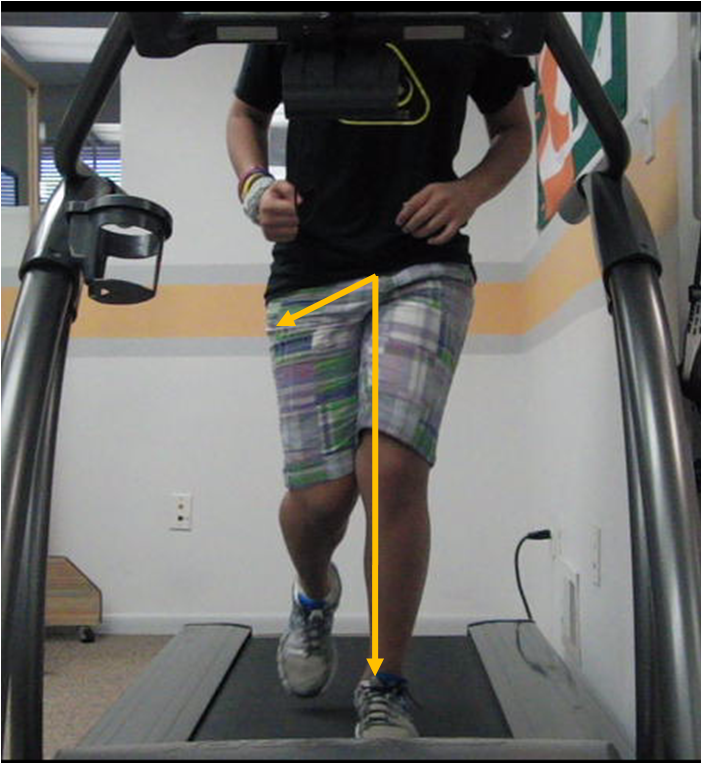The traditional medically oriented examination occurs with a patient on a treatment table focusing on the isolated area of pain. Even worse, a static image such as an MRI may be taken to determine the “cause of the problem”. These types of examination procedures provide only limited information for any professional seeking to develop a treatment plan. The human body does not function on an examination table or in an MRI tube. Movement occurs from a complex interaction of the nervous system with our muscles and joints.
In order to determine an accurate diagnosis and arrive at the best treatment plan, whole patterns of movement should be the focus. A baseball player experiencing pain during the late cocking phase of throwing should be examined throwing a ball in this position. A football player experiencing pain or giving way in the ankle should be examined in the same functional position which recreates his symptoms. This sure seems like common sense, but it is not always common practice.
The Area of Pain is Often Not the Cause
Many times, problems in the hip can lead to pain in the back. Problems in the upper back can lead to pain in the shoulder. And, problems in the ankle can contribute to pain in the knee. I could go on and on with examples of what is typical in an outpatient physical therapy clinic. In order to uncover the cause of pain or poor movement, whole movement patterns must be assessed and treated. For individuals with pain in the front of their knee, isolated treatments to the knee rarely provide substantial relief. Assessing movement patterns such as an overhead squat, step down, or running is often the key to determining the corrective course of action.
Movements, Not Parts
Assessing and treating movement patterns, not isolated body parts, is the key to a speedy and long-lasting recovery. It is very common for limited mobility in the upper back and hips to lead to abnormal motion in the low back. Movement compensations in the low back then manifest as “disc problems” under an MRI. Treating the “disc” is rarely successful in alleviating these types of problems.
Pain Changes Movement
Sustaining a previous injury increases the risk for future injury. Spraining an ankle in middle school can contribute to knee pain in high school. This is because pain or injury changes the way we move. Individuals with previous history of ankle sprains have been shown to demonstrate delayed activation of their glute muscles and difficulty balancing on one leg several years later. If these compensations are not identified and corrected, movement patterns are changed and injury risk increases.
The human body will follow the path of least resistance in order to perform a task. The nervous system will choose to perform the most efficient pattern of movement from an energy standpoint. The body will attempt to conserve energy during movement in case it needs it later during a crisis. However, the most efficient pattern of movement is often not the optimal pattern of movement.
Using the same example of an individual with a previous ankle sprain, we often see asymmetrical weight shifting during exercises such as a squat or deadlift. The asymmetrical weight shift will allow the body to lift the weight at that moment in time. However, with continued compensation of movement, asymmetrical training stresses will be applied leading to suboptimal performance and the potential for further injury.
Muscles Do Not Have Memory
Pain alters the way our nervous system organizes patterns of movement. Muscles do not have memory. The brain stores patterns of movement and then signals muscles to execute what is believed to be the most efficient pattern. With repeated performance of compensatory movement patterns, the abnormal becomes the new normal. The asymmetrical squat is now programmed in the central nervous system and remains long after any injury has healed. The nervous system is very complex and we do not completely understand how this works. However, we do know these patterns can be reprogrammed and corrected with appropriate movement training by skilled professionals.
Optimal Movement is Individual
There is no single best way for all individuals to move. We are all structurally built differently. One person’s hip socket may be oriented facing slightly downward. Another person’s hip socket me be more outward facing. These structural differences will change positioning of the body during movements such as a squat or lunge. Attempting to teach all individuals to move in exactly the same fashion is unreasonable and has the potential to increase risk for injury. All movements, exercises, and exercise programs should be individualized based on the findings from a detailed assessment by a skilled professional.
Conclusion
We should be looking past the isolated area of pain and uncover the true cause of the problem by assessing whole functional movement patterns. This type of assessment identifies subtle problems with movement which we may be unaware of. Once you are made aware of these compensations, you can start to address them. Correcting the problem will take conscious effort and require coaching from a skilled professional. Once you are able to perform the movement correctly and automatically, it is time to increase the load and strengthen the movement pattern.

